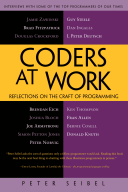Новые книги
Режимы обмена данными
В протоколе большое внимание
уделяется различным способам
обмена данными между машинами
различных архитектур.
Действительно, чего только нет в
Internet, от персоналок и Mac'ов до
суперкомпьютеров. Все они имеют
различную длину слова и многие
различный порядок битов в слове.
Кроме этого, различные файловые
системы работают с разной
организацией данных, которая
выражается в понятии метода
доступа. В общем случае, с точки зрения FTP,
обмен может быть поточный или
блоковый, с кодировкой в
промежуточные форматы или без нее,
текстовый или двоичный. При
текстовом обмене все данные
преобразуются в ASCII и в этом виде
передаются по сети. Исключение
составляют только данные IBM mainframe,
которые по умолчанию передаются в
EBCDIC, если обе взаимодействующие
машины IBM. Двоичные данные
передаются последовательностью
битов или подвергаются
определенным преобразованиям в
процессе сеанса управления. Обычно,
при поточной передаче данных за
одну сессию передается один файл
данных, а при блоковом способе за
одну сессию можно передать
несколько файлов. Описав в общих чертах протокол
обмена, можно перейти к описанию
средств обмена по протоколу FTP.
Практически для любой платформы и
операционной среды существуют как
серверы, так и клиенты. Ниже
описываются стандартные сервер и
клиент Unix-подобных систем. Назад | Содержание | Вперед
4.2. Режимы обмена данными

